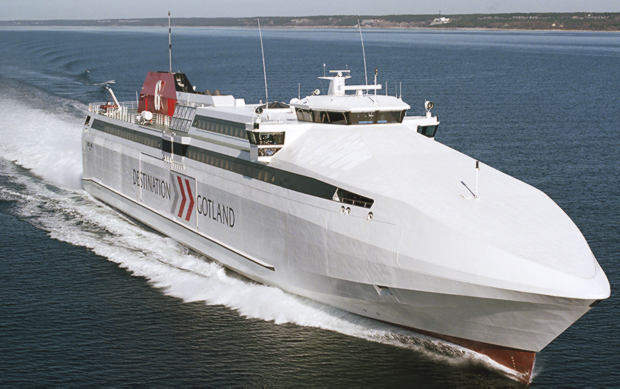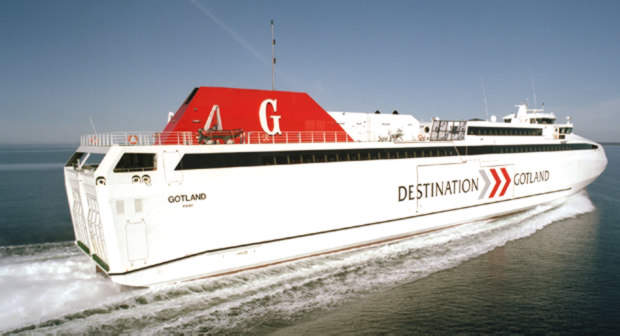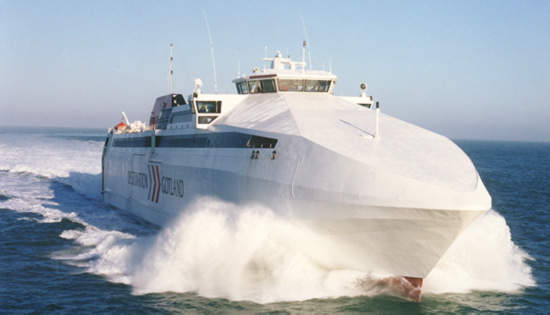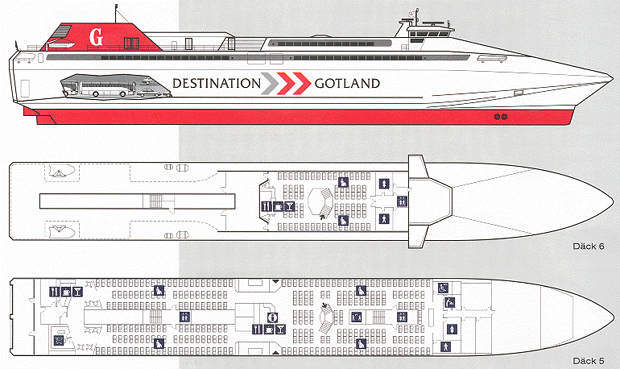Gotland is a high-speed monohull vessel built by the French company Alstom Leroux Naval for Swedish operator Rederi AB Gotland.
Built to operate in the environmentally sensitive waters of the Baltic, the vessel’s design was heavily influenced by Swedish environmental regulations, as well as the requirement to provide a year-round service in icy waters.
The vessel was delivered in February 1999. She flies the Swedish flag and has Lloyd’s Register classification.
Gotland is deployed on a route between Visby on the south east coast of Sweden and the island of Gotland, and makes three round trips a day, 365 days a year. Journey time is approximately two and a half hours with a turn around time of between 30 and 40 minutes.
Vessel design
A watertight compartment separates the ship’s engine rooms, ensuring one room remains operational even if two of the compartments in the area are damaged. The deep-V design vessel has an EH 36 high-tensile steel hull with ten transverse bulkheads. A partial double bottom has been incorporated to provide protection, should the hull be damaged through grounding.
The vessel has been additionally strengthened for manoeuvring at slow speeds in areas of brush ice, such as within harbours or on passages between harbours and the open sea, where the ice has been broken into small flakes. The icy Baltic winters have meant that the vessel is equipped with electrically heated windows, covered mooring decks and four high-capacity air conditioning units that are supplied from hot water boilers in the engine room.
Facilities
Gotland accommodates 700 passengers in three lounges fitted with reclining seats. The main accommodation is on Deck 5 where the aft lounge seats 260 and the fore lounge seats 292.
Retractable televisions fitted in the ceiling at regular intervals provide entertainment during the crossing. The vessel’s reception area, restaurant, nursery and shop are located on Deck 5 and there is an additional lounge located on the upper level (Deck 6) which also has a veranda.
Decks 3 and 4 are given over to vehicles. These are arranged in a ‘U’ shape and accessed via a pair of ramps at the stern of Deck 3, they have a total capacity of approximately 1,010 lane-metres.
Deck 3, which has a strengthened part aft to take up to eight buses or four trucks, has 560 lane-metres or 110 lane-metres for buses and 450 lane-metres for cars. Deck 4 has 450 lane-metres or, with buses on Deck 3, 370 lane-metres.
Ship propulsion
Gotland is powered by four Rushton 20RK270 four-stroke diesel engines with a rating of 7,080kW at 1,030rpm. Each powers a Kamewa 125 SII waterjet, giving the vessel a service speed of 35 knots. Gotland is designed to remain operational in wave heights of up to 4m.
Both the vessel’s main propulsion diesels and the diesel generators are supplied with Siemens’ SINOx Selective Catalytic Reduction units to reduce nitrogen oxide emissions. According to the constructor, the system has led to a six-fold reduction in nitrogen oxide emissions. The use of low-sulphur fuel ensures that SOx emissions from engines conform to the strict limits imposed by Swedish environmental regulations.
A ride control system, based on computer-controlled side fins and stern flaps, means that Gotland relies on her waterjets for manoeuvrability only when in port or when changing course.
The vessel’s navigation and communications equipment is located on a top bridge that has 360° visibility, while the monitoring and control equipment is located on the deck below.







